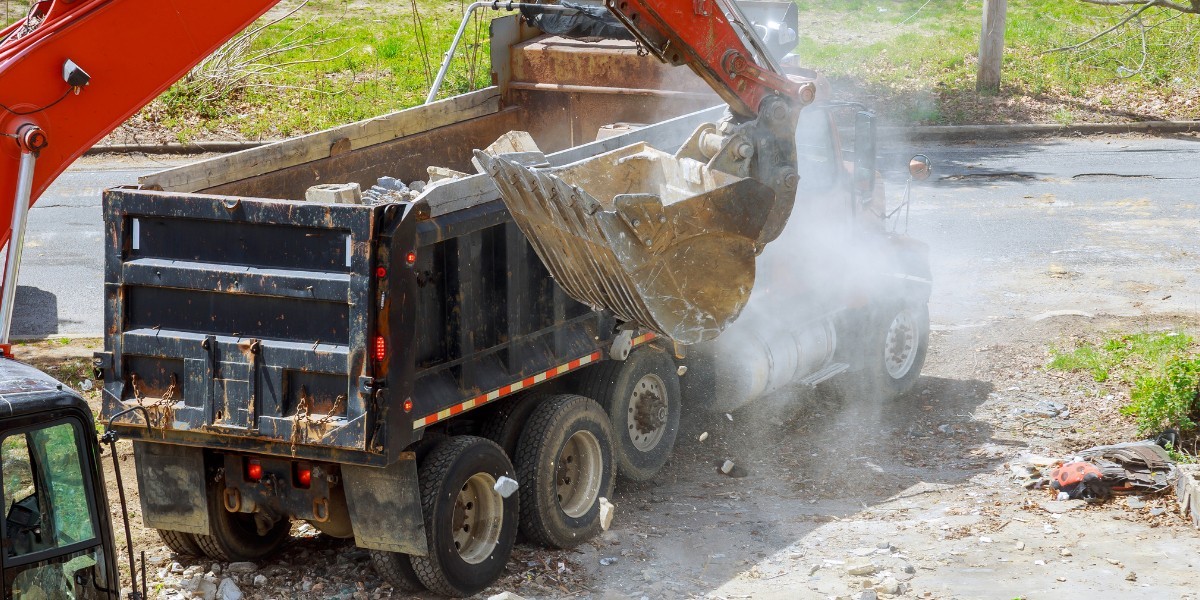Construction projects, whether large or small, often leave behind piles of debris. Broken wood, drywall, tiles, bricks, and packaging materials can quickly add up and clutter a space. Without proper handling, this debris can become a safety hazard and slow down the progress of your project. That is why understanding the junk removal process for construction debris is so important.
At Trash and Dash Junk Removal, located at 952 Craigtown Rd, Port Deposit, MD 21904, United States, we specialize in making debris removal quick, safe, and stress-free. This article will explain the junk removal process step by step in very simple language so anyone can understand it. By the end, you will know how construction debris is collected, sorted, hauled away, and disposed of responsibly.
Why Junk Removal Is Needed for Construction Debris
Before jumping into the process, let us look at why junk removal matters in construction.
Safety First – Piles of sharp wood, glass, or broken tiles can hurt workers or anyone walking around the site.
Better Organization – A clean site makes it easier for workers to move and finish tasks faster.
Eco-Friendly Disposal – Many items, like metal and concrete, can be recycled instead of dumped in landfills.
Saves Time and Effort – A professional junk removal service does the heavy lifting and hauling, so you don’t have to.
Complies with Rules – Many states have laws about how construction waste must be handled.
Now, let’s break down the junk removal process in a clear, step-by-step way.
Step 1: Planning and Assessment
The junk removal process always begins with planning. When construction debris starts to pile up, a junk removal team first visits the site. They look at the type and amount of debris.
What kind of debris is there? For example, wood, metal, drywall, tiles, shingles, or concrete.
How much debris is there? A small renovation may only need one truckload, but a big construction site may need several.
Where is the debris located? On the ground floor, upstairs, or outside in a pile.
This first assessment helps the junk removal company decide how many workers, trucks, and tools are needed. It also helps in giving a fair cost estimate.
Step 2: Sorting and Separation
Once the team knows what needs to be removed, they begin sorting the debris. Not all construction waste is the same. Some can be recycled, some can be reused, and some must go to a landfill.
Here is how the sorting usually works:
Wood and Lumber – If it is in good condition, wood can be reused or sent to a recycling center.
Metal – Metals like steel, copper, and aluminum are valuable and almost always recycled.
Concrete and Bricks – These can be crushed and used again for new building projects.
Drywall – Can sometimes be recycled but may need special handling.
Hazardous Waste – Items like old paint, chemicals, or asbestos need special disposal methods.
Sorting is important because it reduces waste and protects the environment.
Step 3: Collection and Loading
After sorting, it is time to gather the debris and load it onto the truck. This is the stage where professional junk removal workers make the biggest difference. They have the training and equipment to handle heavy or sharp items safely.
Protective Gear – Workers wear gloves, boots, and helmets.
Special Tools – They may use wheelbarrows, dollies, or even small machinery for heavy concrete.
Safe Lifting – They use correct lifting techniques to avoid injuries.
Instead of spending days hauling trash on your own, a trained crew can load up debris in just a few hours.
Step 4: Transportation
Once the debris is collected and loaded, the next step is transportation. Professional junk removal companies like Trash and Dash Junk Removal have trucks designed for carrying heavy loads.
Large Trucks – These can carry wood, concrete, and other bulky materials in fewer trips.
Secured Loads – Debris is tied down or covered so nothing falls out during transport.
Direct Routes – The trucks head straight to recycling centers, donation facilities, or landfills.
Transportation is often one of the hardest parts for people trying to do junk removal on their own. Renting trucks, driving back and forth, and paying disposal fees can take a lot of time and money.
Step 5: Recycling and Donation
One of the best parts of the junk removal process is recycling and donating useful materials. Instead of wasting everything, many items can be given a second life.
Recycling Centers – Metals, plastics, and wood are sent to recycling plants.
Concrete Reuse – Old concrete and bricks can be crushed and reused for roadwork or foundations.
Donations – Usable items like lumber, cabinets, or doors can be donated to community organizations or charities.
This step helps reduce the amount of waste going to landfills and supports eco-friendly construction.
Step 6: Safe Disposal
After sorting, recycling, and donating, the last step is disposal. Some items cannot be reused or recycled. For example, broken drywall or hazardous waste often need to go to special facilities.
Professional junk removal services make sure these materials are disposed of according to state and local laws. This prevents harmful materials from damaging the soil, water, or air.
Extra Services That Can Be Included
Many junk removal companies also offer extra services during the debris removal process.
Dumpster Rentals – Some projects need a dumpster placed on-site so workers can throw debris in as they go.
Regular Pickups – For long construction projects, junk removal teams can come weekly or monthly.
Site Cleanup – After hauling away debris, the team can sweep and clean the area so it is ready for the next stage.
At Trash and Dash Junk Removal, we tailor our services to the needs of homeowners, contractors, and businesses.
Benefits of Hiring a Professional Junk Removal Service
You may wonder if you can handle debris removal yourself. While possible, hiring professionals comes with many benefits:
Time Savings – A job that could take you days can be done in hours.
Safety – Professionals know how to handle sharp, heavy, or hazardous debris.
Proper Disposal – They follow recycling laws and know which facilities accept certain materials.
Cost-Effective – By the time you rent a truck, buy safety gear, and pay disposal fees, hiring a service may cost less.
Peace of Mind – You can focus on finishing your project while the junk is handled.
Eco-Friendly Construction Debris Removal
Today, more homeowners and builders want eco-friendly solutions. Junk removal services support this by:
Recycling as much as possible.
Donating reusable items to local charities.
Using fuel-efficient trucks for hauling.
Following local environmental rules.
At Trash and Dash Junk Removal, we are proud to help keep construction waste out of landfills whenever possible.
Tips for Preparing for Junk Removal
If you are planning construction work, here are some simple tips to make the debris removal process smoother:
Plan Ahead – Book a junk removal service before your project starts.
Separate Hazardous Waste – Keep paint, chemicals, and other hazardous items separate.
Organize Debris Piles – Keep wood, metal, and concrete in separate piles if possible.
Clear a Path – Make sure workers can easily access the debris pile with trucks or wheelbarrows.
Communicate Clearly – Tell the junk removal team about special items or instructions.
Example: Small Home Renovation Project
Imagine you are remodeling your kitchen. You will likely have old cabinets, broken tiles, drywall, wood, and packaging materials. Instead of stacking these in your backyard, you can call Trash and Dash Junk Removal.
They assess the pile.
They sort the items into recyclables, donations, and waste.
They load everything safely onto their truck.
They recycle the wood and metal, donate usable cabinets, and dispose of the rest responsibly.
In just a few hours, your backyard is clean, and you are free to enjoy your new kitchen without stress.
Conclusion
The junk removal process for construction debris is more than just hauling trash. It is a step-by-step method that includes planning, sorting, collection, transport, recycling, and safe disposal. Each step makes the construction site safer, cleaner, and more eco-friendly.
Hiring a professional service like Trash and Dash Junk Removal, located at 952 Craigtown Rd, Port Deposit, MD 21904, United States, saves time, protects the environment, and ensures everything is handled properly. Whether you are doing a small home renovation or a large building project, professional junk removal is the smartest and easiest choice.








